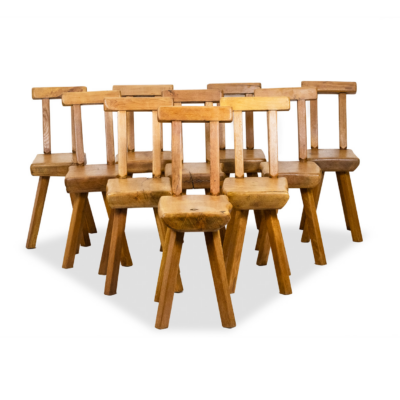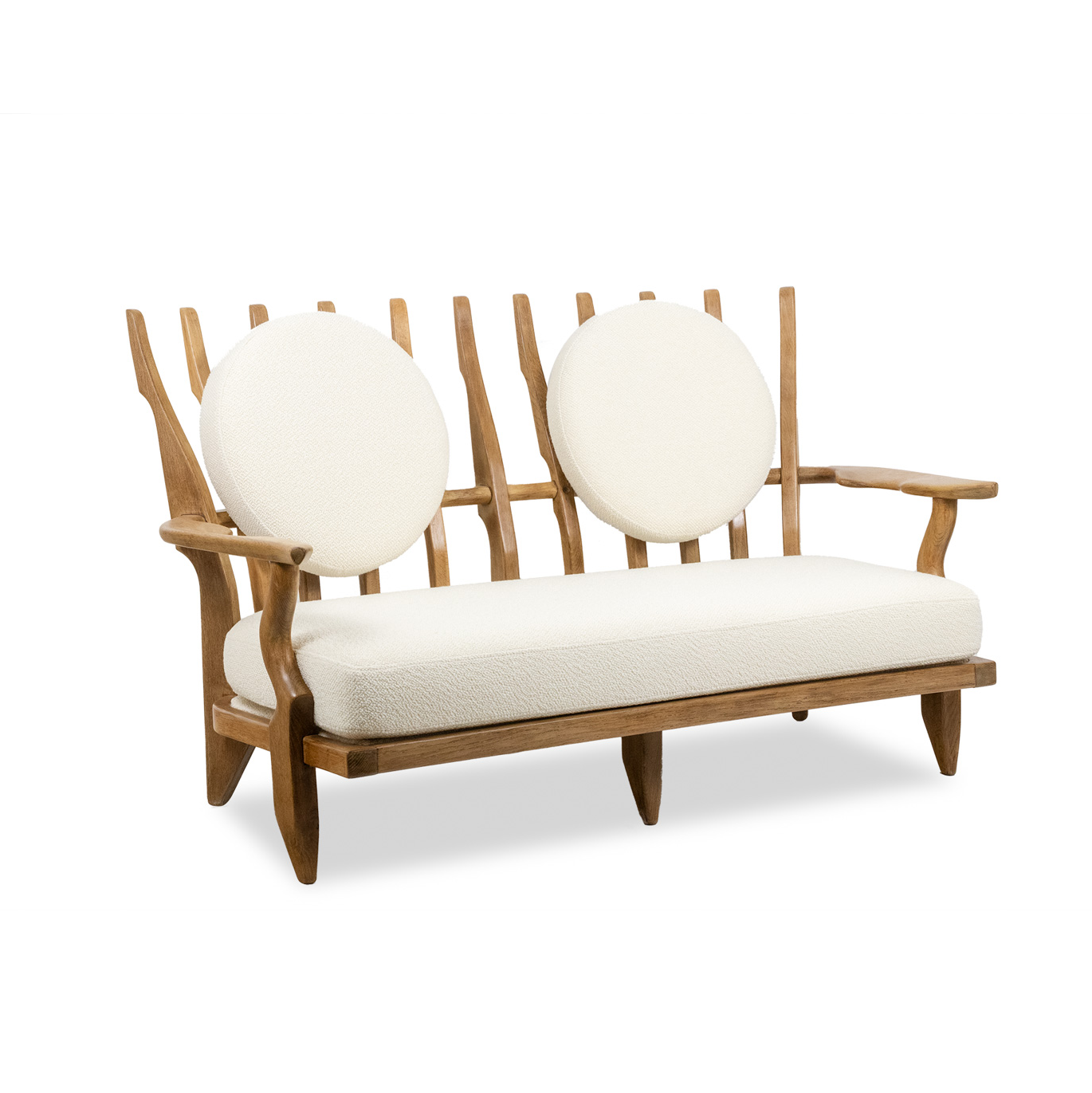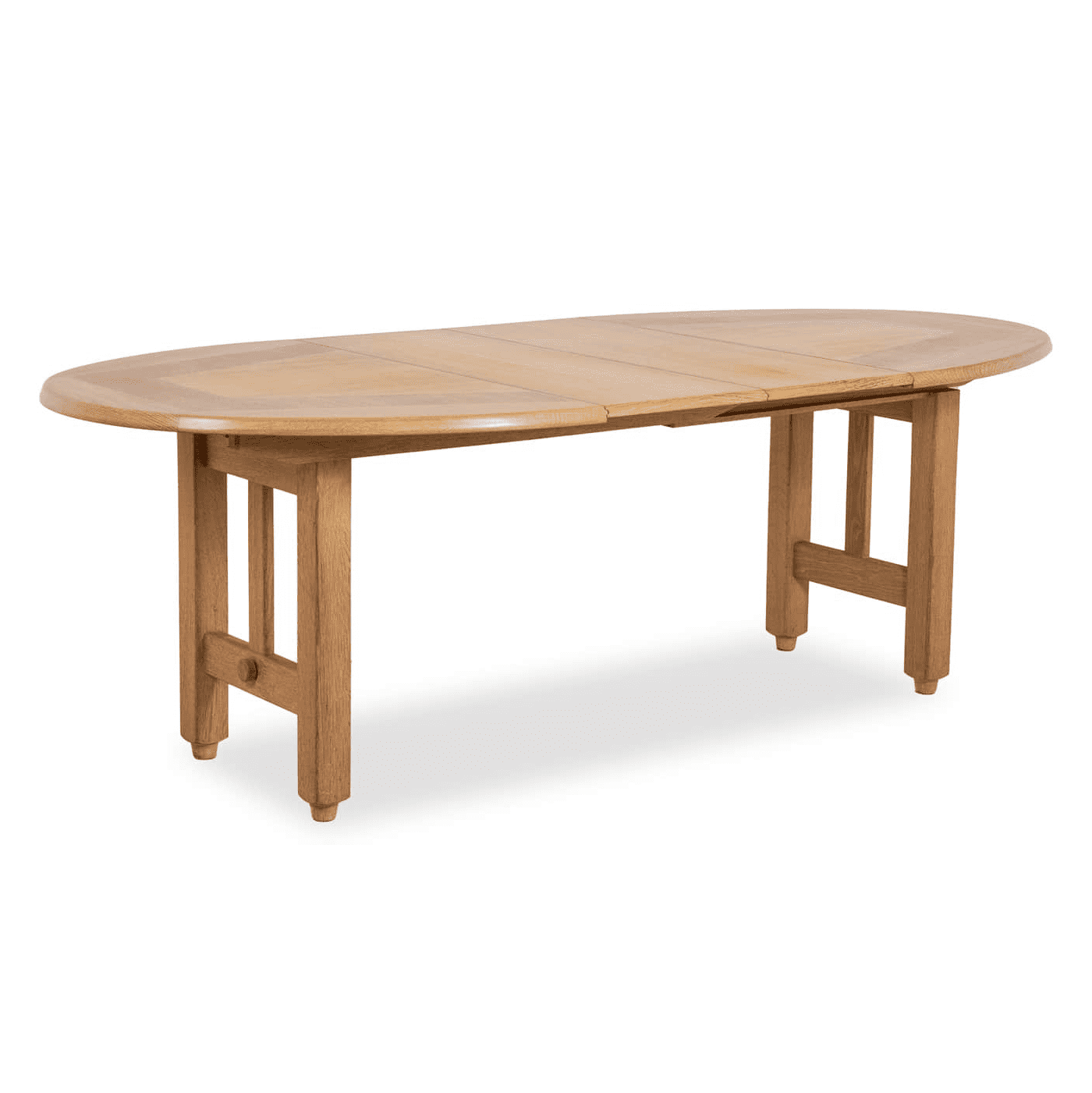The 1950s and 1960s saw the rise of Brutalist architecture and design, a style characterized by its raw, minimalist aesthetic and robust construction. While Brutalist design is often associated with large concrete structures, its influence extended to the world of furniture design, where it found a unique expression. This article delves into the essence of Brutalist furniture, exploring its social and political roots, materials, defining aspects, and the contributions of designers Robert Guillerme and Jacques Chambrun.

Understanding Brutalist Furniture Style
Social and political context
The Brutalist movement emerged in the post-World War II era, and was characterized by reconstruction and a desire for honesty in design and materials. The term “Brutalism” is derived from the French word “béton brut,” meaning raw concrete, and was popularized by architects such as Le Corbusier. The movement was a reaction against the decorative and ornate styles of the past, embracing functionality, simplicity, and an unadorned approach.
The brutalist aesthetic was influenced by the social and political landscape of the time. The post-war period called for efficient and affordable housing and public buildings, which led to the use of readily available and inexpensive materials. Furthermore, this pragmatic approach extended to furniture design, where the emphasis was on utility, durability, and an unadorned appearance.
Materials and techniques
Brutalist furniture often features materials that reflect the movement’s architectural roots. Common materials include:
woodOften in its natural, solid form, it shows the wood grain and imperfections.
metalIt is used for structural elements and finishes, providing a stark industrial feel.
cementIt is sometimes used in smaller pieces, reflecting architectural brutalism.
to forbidIt is used for its quality fabric and durability.
The construction techniques favored in brutalist furniture emphasized craftsmanship and the integrity of materials. As such, pieces were often handcrafted, with visible joinery and an emphasis on the natural beauty of materials.
Defining the sides of the furniture
Raw aesthetics
A hallmark of Brutalist furniture is its raw, unpolished look. This style values the inherent qualities of materials, allowing them to take center stage. For example, wood may be rough-cut, metal left to be polished, and joinery displayed, celebrating the process of construction.


This wonderful set of ten In the wild style The chairs feature a unique blend of natural oak and beech wood. Available today on Styylish. Made in Belgium in the 1960s, each chair features a distinctive rectangular shape with a compass-shaped base, embodying the raw geometric aesthetics of brutalism.
Strong geometric shapes
Brutalist furniture is characterized by its bold geometric shapes and solid forms. The design tends to be homogeneous, with an emphasis on mass and volume. Furthermore, this results in pieces that are visually stunning and functional.


this brutal The Styylish rectangular table or desk embodies the rough and rugged aesthetic typical of the Brutalist movement. It is made of solid, weathered beech wood. It was manufactured in 1988. France Dating back to around 1900, it showcases the enduring beauty of natural materials and handcraftsmanship.
Function over form
In keeping with its architectural roots, Brutalist furniture prioritizes function over form. Designs are therefore functional, often featuring built-in storage and multifunctional elements. Comfort and practicality are key considerations, even within the constraints of raw aesthetics.


Enjoy the rugged elegance of the Maison Chevalier Chair, a distinctive piece from the 1960s. Made by Maison Chevalier, this unique piece is now available on Styylish and is a true testament to the brutal Unique Design. This chair features free-form carved wood that exudes raw, sculptural beauty. Additionally, the irregular organic shapes add a unique and attractive dimension to the chair, making it a distinctive piece of art and furniture.
simple decoration
There is little ornamentation in brutalist furniture. Therefore,The various decorative elements are often a natural extension of the materials or construction techniques used. This minimalist approach reinforces the honesty and simplicity that is at the heart of the Brutalist philosophy.


This Styylish Brutalist armchair is crafted from solid natural blond ash wood. The unadorned seat and back, covered in goatskin, not only provide comfort but also add a rustic touch. The chair stands out with its distinctive three bars, enhancing its Brutalist character. With its unique combination of organic materials and sturdy construction, this armchair is a statement piece that will add character to any space.
Jeremy & Chambrun: Pioneers of Brutalist Furniture
French designers Robert Guillerme and Jacques Chambron were instrumental in bringing the aesthetics of Brutalism to the world of furniture design. The duo’s work is characterised by its innovative use of materials, robust construction and distinctive mix of raw and refined elements. The two had met in 1940 while imprisoned by the Germans in East Prussia, and had become friends through their shared passion for design, among other things. After the war in 1949, the duo discovered Emile Darrieussecq, a skilled cabinetmaker who had a shop in the city and was willing to produce their designs.


Robert Guillerme
An architect by training, Jeremy brought a structural and architectural sensibility to furniture design. His pieces often feature bold lines, geometric shapes, and a focus on function. Jeremy’s approach to design was deeply influenced by the Brutalist movement, with an emphasis on the integrity of materials and honesty of construction.
Jack Chambrun
A talented painter and designer, Chambrun complemented Jeremy’s architectural approach with a keen eye for detail and texture. His contributions to their collaborative designs often used rich, tactile materials and thoughtful finishes. This enhanced the raw beauty of the pieces.
Their collaborative work
Together, Guillerme and Chambrun created furniture that embodied the Brutalist style while remaining accessible and functional for everyday use. Their designs often featured solid oak, exposed joinery, and a mix of rough and refined elements. In fact, the duo’s work has become collectibles, celebrated for its unique interpretation of Brutalist principles in a domestic context.




Brutalist furniture design in today’s home
Incorporating Brutalist furniture into modern interiors can create a striking and harmonious balance between roughness and sophistication. To effectively design Brutalist furniture, start by embracing the raw, unpolished look that defines the style. For example, pair a Brutalist side table or chair with softer elements, such as a tufted rug or upholstered seating, to create contrast that highlights the unique textures and shapes of Brutalist furniture. Additionally, keep the color palette neutral and earthy, allowing natural materials to shine.


Additionally, try to incorporate complementary modern elements, such as minimalist lighting or abstract art, to enhance the architectural feel of the furniture. So to maintain a cohesive look, use Brutalist furniture as accent pieces, making sure it remains a focal point in the room. By balancing Brutalist furniture with contemporary decor, you can achieve a sophisticated and visually appealing space that celebrates both history and modernity.


Finding harmony in the raw and polished decor of brutalism
The Brutalist furniture style of the 1950s and 1960s is a testament to the power of raw materials and honest design. Born out of a social and political landscape that valued function and simplicity, the style eschewed ornamentation in favor of bold geometric shapes and a celebration of the natural qualities of materials. Furthermore, the contributions of designers like Guillerme and Chambron highlight the enduring appeal of this aesthetic. Embracing Brutalist furniture, therefore, is not just about adding a piece of history to your home; it is also about appreciating the beauty in simplicity and the ingenuity in function.

